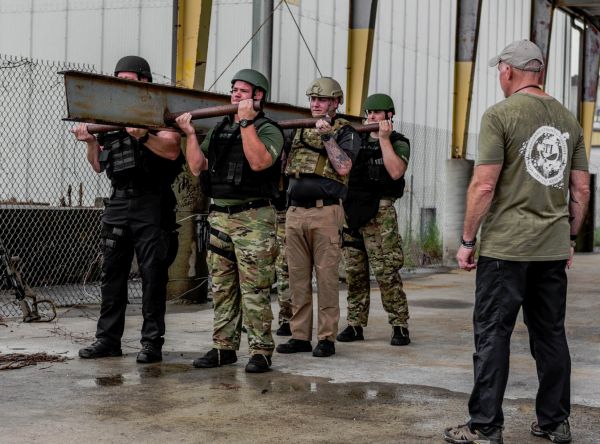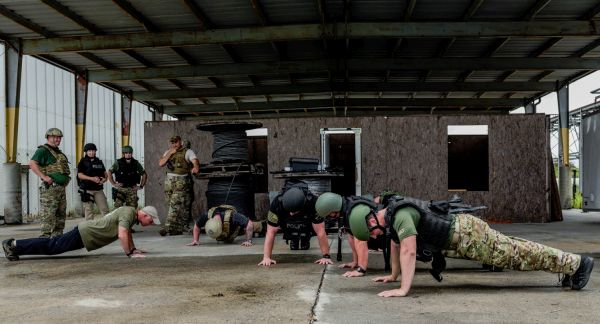|
The Law Enforcement Officer and Physical Fitness June 28, 2017 By Dennis O'Connor - GTI Director of Training Most individuals who decide to enter into a Law Enforcement career must prepare for and pass a physical fitness test to be considered for a position as a police officer. Once selected for the position, recruits enter into some type of formal police training center where they are physically and mentally challenged, educated and trained. It is during the career as a police officer, that some let physical fitness become a thing of the past or find little time in their busy schedules to accommodate physical fitness. Why is physical fitness important? How does it support what we do as a police officer?  Law Enforcement can be at times physically demanding and it is not uncommon for officers to find themselves in high stress situations and at times in the midst of potentially deadly encounters. A physical fitness regimen designed to tax the cardiovascular system and muscles that support the skeletal system assists in reducing the traumatic effects on the human body in a life threatening situation. The human body is complex in many ways; it is comprised of the skeletal system, central nervous system, muscles, arteries (pathways for oxygen enriched blood) and critical organs such as our heart, lungs and brain. When the human body is exposed to a critical incident, we as individuals begin to exhibit Sympathetic Nervous System (SNS) response to danger. What is SNS, how does it affect our performance in a combat type situation? Once exposed to a critical incident, the human body reacts to the threat with tunnel vision, 70% auditory exclusion, rapid heart rate, major blood flow to major muscles with decreased blood flow to appendages and a surge of adrenaline (also known as the fight or flight response). All of these physical changes can be detrimental to an individual if not prepared. How does and individual prepare for life threateening situations? Most police agencies provide training in various related areas of law enforcement but usually do not require maintenance of physical fitness throughout one's career. If an individual lives a sedentary lifestyle, has bad eating habits and fails to condition the body to perform, this individual becomes more of a risk during the onset of a critical incident because of the increased tax on that individual's body which limits their capacity to react in an ideal manner. The human heart is the only muscle in the body that works on its own and is responsible for receiving and disbursing oxygen enriched blood to the body and brain. Without exercise, the pathways for delivering that oxygen enriched blood- arteries, veins and capillaries, a portion can become dormant restricting blood flow. Poor diet can also result in arterial blockages which further restricts efficient delivery of adequate blood flow. Our lungs are the key part of our respiratory system. Oxygen is taken in, transferred into the blood while carbon dioxide is removed from the blood and exhaled. Conditioning our lungs with aerobic exercise is essential to the utilization of the lungs at full capacity. With aerobic exercise, we can increase our VO2 max which is the amount of oxygen a person can utilize under extreme duress. The more oxygen a person can utilize the more they limit those negative physical impacts of the flight or fight response. What type of exercise or how much does and individual need? According to the Mayo Clinic: For most healthy adults, the Department of Health and Human Services recommends these exercise guidelines: Aerobic activity. Get at least 150 minutes of moderate aerobic activity or 75 minutes of vigorous aerobic activity a week, or a combination of moderate and vigorous activity.
In law enforcement, strength training as well as aerobic training is essential in order for individuals to perform well without undue stress on their bodies. With proper aerobic training we condition our lungs, heart and pathways to maximum efficiency allowing the oxygen enriched blood to travel through the body unrestricted, which is critically necessary for muscular performance and mental decision making. Strength training as an additional component to an exercise regimen allows for muscle development and growth which is vital to physical performance, movement and flexibility. As for strength and conditioning, a routine targeting all muscle groups two times a week is sufficient. Also aerobic activity can be included in strength and conditioning by adjusting the amount of weight and increasing the repetitions. Law enforcement officers today must be able to demonstrate sound decision making skills in the midst of complex scenario assessment. To effectively perform in a critical incident our bodies need to be physically fit to endure the physical impact that will occur, so that our responses and judgments are fluid, clear, concise and without delay. It is imperative that officers prepare themselves as best as possible, both physically and mentally to ensure that in critical incidents they are assets to their teams and do not become a liability because of poor decision making due to their inability to cope with a stressful situation. Further, in the unfortunate circumstance that an officer is injured in an encounter, better physical fitness can help to reduce their recovery time and increase resilience from an injury. In today's complex and challenging world, sound scenario assessment and prioritization are essential components of any officer's role. Officers can prepare themselves to perform well in critical incidents through training their bodies and minds to handle stress responses. Physical fitness, while sometimes overlooked in one's busy life is a key component of this training and has the potential to make a significant difference in an individual's performance and recovery from a critical incident. |
